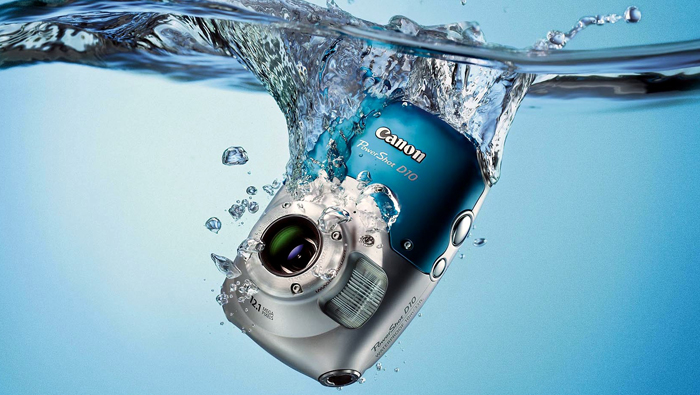
The world of electronic devices, as confusing as it gets by the day, is leaving no stone unturned to lure the spenders. Every other day there is seemingly something magical new in the same old devices, only for us to realise it was the same old cookie in a new packing, once we have fallen for it.
A new feature being highlighted too much these days, especially in the camera segment and the smartphones; the electronic better half – is water resistance. Ah, now to be more precise, it is not always just water resistant that is mentioned; sometimes it says waterproof, other times water repellant.
But who cares, the mention of any of the three gives us instant goosebumps as we go dreaming, playing with the device right among the exotic water creatures deep under. “CUT”: Roll back – the reality is each term is very different from the other. Diving right away into the shallow crystal waters with your beloved gadget – which said something about water protection; could let the device soaking wet and your eyes wetter after wards.
Not every water protected device offers the same level of ruggedness and ease of use in wet conditions; else why the different labels? Simply put, the three labels offer varying levels of water protection.
Waterproof
The strongest label among the three: also the trickiest. Being waterproof means the device can remain submerged and unaffected in water, but only for some time. While theoretically the device is supposed to remain impervious to water; practically, it is not a permanent condition. After some time, the protective shield will have reached its limit of defense, and will give in to the mighty waters. Better get out before that happens; enough of that photography.
Water repellent
The water repellent devices are treated with a nano-film coating on the inside, outside, or both, making it real hard for the water to penetrate. While a waterproof device can supposedly withstand water, the water repellent devices can repel water, giving it a hard time getting on to them. However most of the products claiming water repellency end up being victims of unpredictability and failure.
Water resistant
The so tagged devices are able to resist water penetration only to some degree and not entirely. That means you can happily wash your hands while donning your prized wristwatch, or enjoy a light drizzle while clicking and sending a selfie right away to your loved one. But your device will surely succumb to the much dreaded death by toilet, if it takes the fall.
This means that your device is able to resist water, but it’s not 100% fool proof. The most common tag of the three, and offering the lowest level of protection – it is more or less the same as water repellent, with a light substance surface coating. A lot of businesses will say that their products are water repellent when in actuality they’re water resistant because the properties are so common and hard to differentiate.
More often it is the watches that are made water resistant considering the uncertain moods of the weather. Diving watches are the only ones that come waterproofed.
The IP code
Of late the waterproof (or resistant/repellant) gadgets are coming with a 2 digit IP code. The IP stands for Ingress Protection, a rating scale of 0 to 8, to measure the effectiveness of eliminating waters entry into the product; established by the International Electro-technical Commission (IEC).
The first IP digit denotes foreign objects like dust while the second stands for water. The recently launched Samsung Galaxy S7 boasts of IP68 water resistance. It means the device is rated 6 for dust resistance, and 8 for water. A rating of below 5 means bad resistance, while 5 is average, and above 5 is considered good. It implies the S7 has good dust and water resistance, with stronger water resistance than dust.
A device carrying “X” in either IP digit means it is not protected on the said parameter. For instance IPX8 means the device is not dust protected but can withstand water.
In the end, the bitter truth at the moment is nothing is waterproof; at least of what we see around in the markets. Total waterproof technology at the moment is way too expensive to be thrown into mass markets.
100% waterproof levels can only be attained by Ultrasonic welding at the moment. The insanely expensive and complex device uses ultrasonic sound waves to create permanent hole-free bonds between surfaces into this seam. The machine even requires very highly trained and skilled technicians to operate (more like Fugu chefs).
Using the term waterproof actually is more of a selling gimmick by the companies. The term waterproof denotes a permanent condition; a waterproof device should never fail when in contact with water–no matter the situation. And which is not the case so far – no infallible device exists (no, we are not talking military grade).
A withstanding argument is that nothing is actually waterproof – just varying degrees of water resistance.